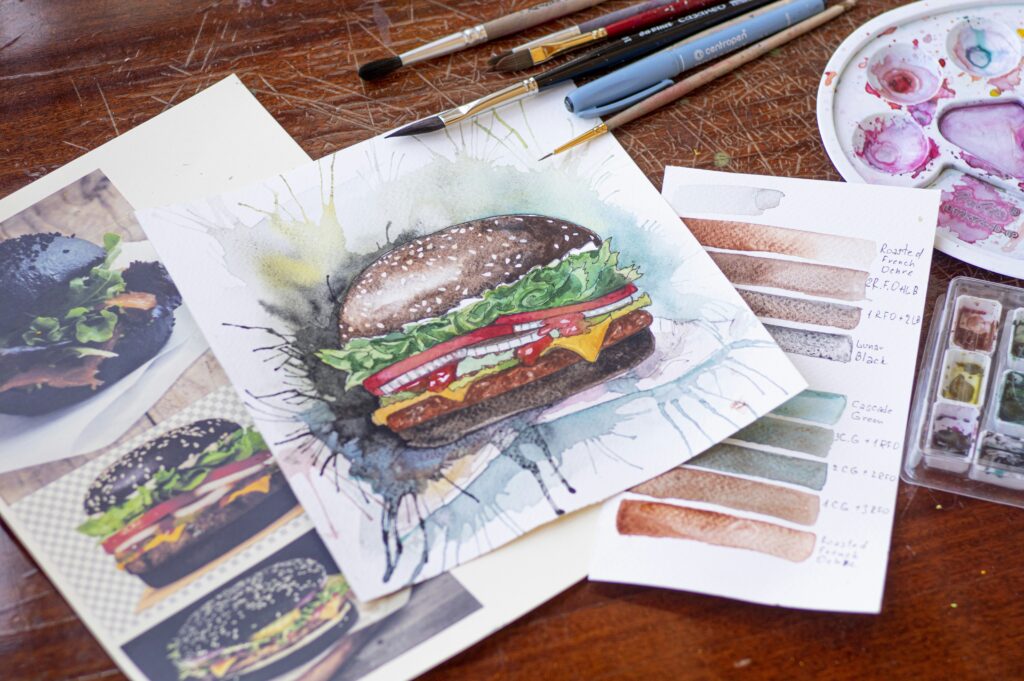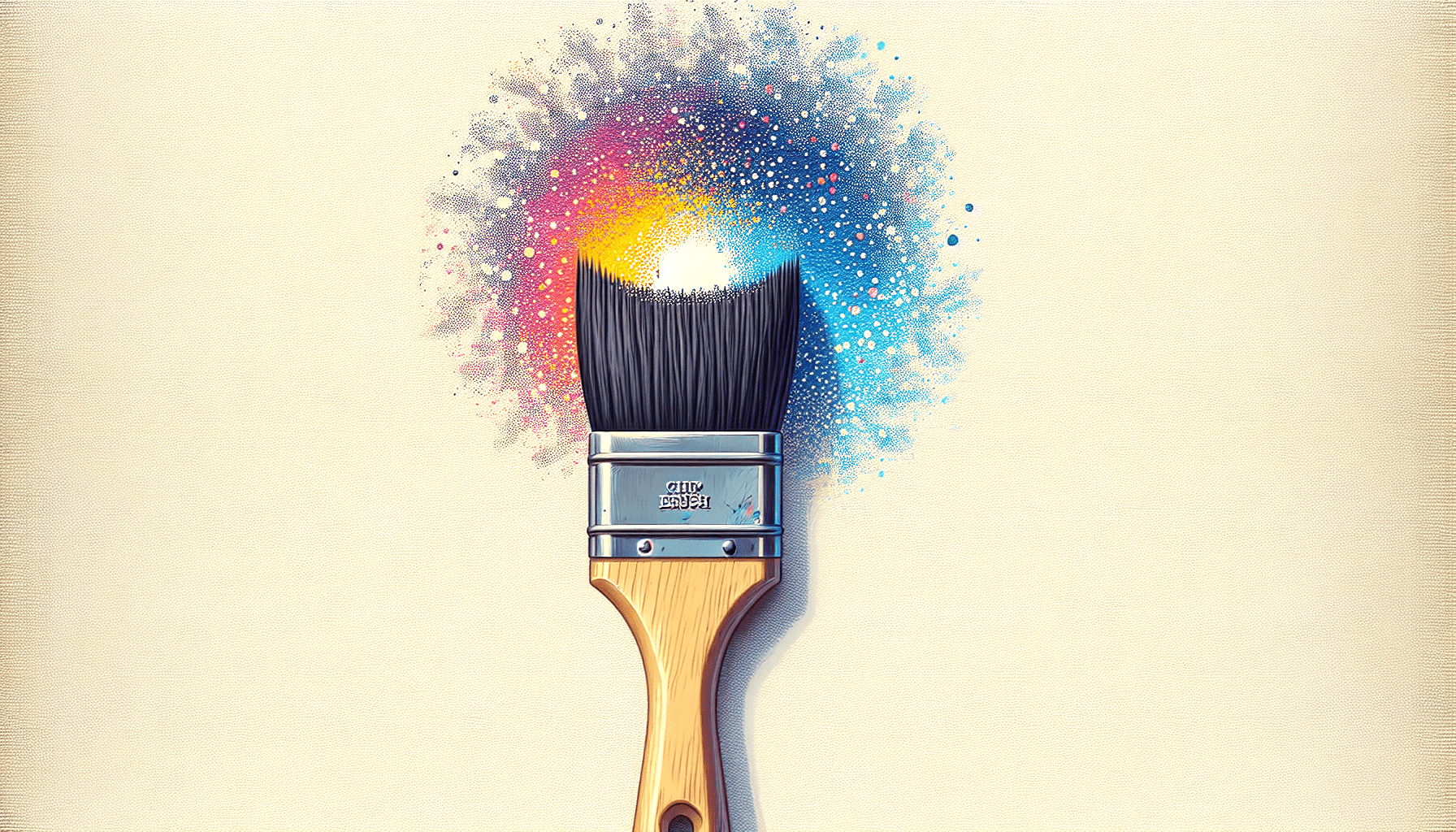In the realm of artistic expression, the way you wield your painting brush can deeply impact the final result of your work. The article “How To Hold Painting Brush” furnishes thorough insights into the techniques and methods to correctly grasp your brush to create strokes that bring your vision to life. Equipped with this information, you can effectively position your fingers, manage pressure, and control nuances – enhancing the charm and fluidity of your artwork.
1. Understanding the Basics of Holding a Painting Brush
A firm foundation in the basic principles of brush holding is integral to enhancing your painting abilities. Effective brush handling enhances brush control, accuracy, fluidity, and can help prevent hand fatigue during long painting sessions.
Importance of Proper Brush Grip
The correct grip on a painting brush facilitates accuracy and helps avoid awkward hand cramps. Often, we are tempted to grip a brush as we would a pen or pencil. However, while this approach may offer control, it restricts movement and can lead to discomfort, or even pain, over time.
Different Methods of Holding a Brush
Primarily, there exist a variety of methods to hold a brush. Conventional grip methods such as the tripod grip, pencil grip, and fist grip provide control, allowing for detailed work. On the other hand, less formal methods like the overhand, dagger, or extended grip lend themselves to more expressive, broader brush strokes.
Finding the Right Brush Size and Shape
The brush size and its shape play pivotal roles in the artwork’s eventual outcome. Larger brushes are suitable for broader strokes and filling in large areas, while smaller brushes facilitate precision and meticulous detail. Liaise your brush size and shape choice with the surface area you’re covering and the level of detail required.
Maintaining a Relaxed Hand Posture
Maintaining a relaxed grip on the brush and adopting a comfortable hand posture can prevent injuries caused by prolonged stress or tension. Plus, a relaxed hand can enable better control, smoother strokes, and an overall improvement in your brushwork.
2. Positioning Your Hand for Better Control
Holding the Brush Towards the End of the Handle
Holding the brush towards the end of the handle provides a looser grip, resulting in a freer, more expressive painting style. It allows your entire arm to participate, thereby offering a greater deal of motion and fluidity.
Avoiding a Tight Grip
A firm grip can impede motion, leading to stiffness and fatigue over time. Lightly grasping the brush promotes suppleness, enabling a wider range of movement and control.
Positioning Your Fingers on the Brush Handle
Strategically positioning your fingers on the brush handle can greatly impact brush control and comfort. For a relaxed grip, let your thumb, index, and middle fingers do most of the holding, while the other fingers offer balance.
Using Your Non-Dominant Hand for Support
Utilize your non-dominant hand to support your dominant hand or to steady your canvas. This practice enhances stabilization, therefore allowing more control and reduced chance of mistakes.

3. Exploring Different Brush Holding Techniques
Traditional Grip Technique
The traditional grip, also known as the pencil grip, involves holding the brush like a pen or pencil. Ideal for detailed work, it can provide precise control over the brush strokes.
Angled Grip Technique
Angled grip allows for a dynamic approach to brushwork. With the brush held at an angle to the canvas, you can apply broader strokes and effectively use the sides of a flat or filbert brush.
Overhand Grip Technique
The overhand or knife grip offers a moderate level of control, but maximizes freedom of movement. It is often used for larger, looser, or more expressive work.
Side Grip Technique
In the side grip technique, the brush is held at the side of the fingers. It can allow for a unique approach and is typically employed for specific stylistic brushes.
4. Considering Brush Size and Shape
Choosing the Appropriate Brush Size for Your Artwork
The size of your brush should correspond with the scale of your artwork. Larger brushes are ideal for larger works or for filling in backgrounds, while smaller brushes should be used for detailed work or smaller pieces.
Understanding Different Brush Shapes and Their Uses
Brush shapes influence the range and type of brush strokes that can be created. Flat, round, filbert, bright, and fan brushes each have their specialized uses, varying in the precision, fluidity, and texture of strokes they create.
Experimenting with Different Brush Sizes and Shapes
Your brush choice should not merely be a reaction to your artwork’s needs but also an extension of your artistic approach. Experiment with different brush sizes and shapes, as each tool will offer unique possibilities that can elevate your work.

5. Maintaining a Relaxed and Comfortable Hand Posture
Avoiding Tension in Your Hand and Arm
A relaxed grip and loose arm movement are crucial to avoid tension and subsequent hand or arm fatigue. Strained holding styles may offer control, but they can lead to discomfort, cramping, and even injury.
Keeping Your Fingers Flexible and Loose
Loose, flexible fingers allow freedom of movement, enhancing flaired brushwork and overall control. Stiff fingers can limit the range of motion, leading to a rigid painting style.
Relaxing Your Wrist While Painting
A relaxed wrist fosters a broader range of motion, enabling smoother, more fluid strokes. It also helps to prevent cramping and stiffness in the hand and arm.
Taking Breaks and Stretching Your Hand Muscles
Taking timely breaks and performing minor stretches can provide immense relief and prevent fatigue. Regular rest periods ensure your wrist and fingers stay nimble, thereby maintaining painting quality.
6. Developing Brush Control and Precision
Practicing Brush Control Exercises
Doodling, drill exercises or tracing can help develop brush control. These exercises gradually enhance hand-eye coordination, boost fine motor skills and eventually result in more balanced and controlled brush strokes.
Enhancing Your Fine Motor Skills
Fine motor skills are vital to achieving detailed artistic work. Activities such as calligraphy, sewing, or playing a musical instrument can cultivate these skills, strengthening your hand and finger muscles, enhancing your dexterity, and improving your brush control and precision.
Mastering Different Brush Strokes
Familiarize yourself with the many types of brush strokes – flat, gradient, scumbling, glazing, etc. – and practice them. This practice enhances versatility and simplifies manipulating your brush to achieve the desired effect on your canvas.
[…]




